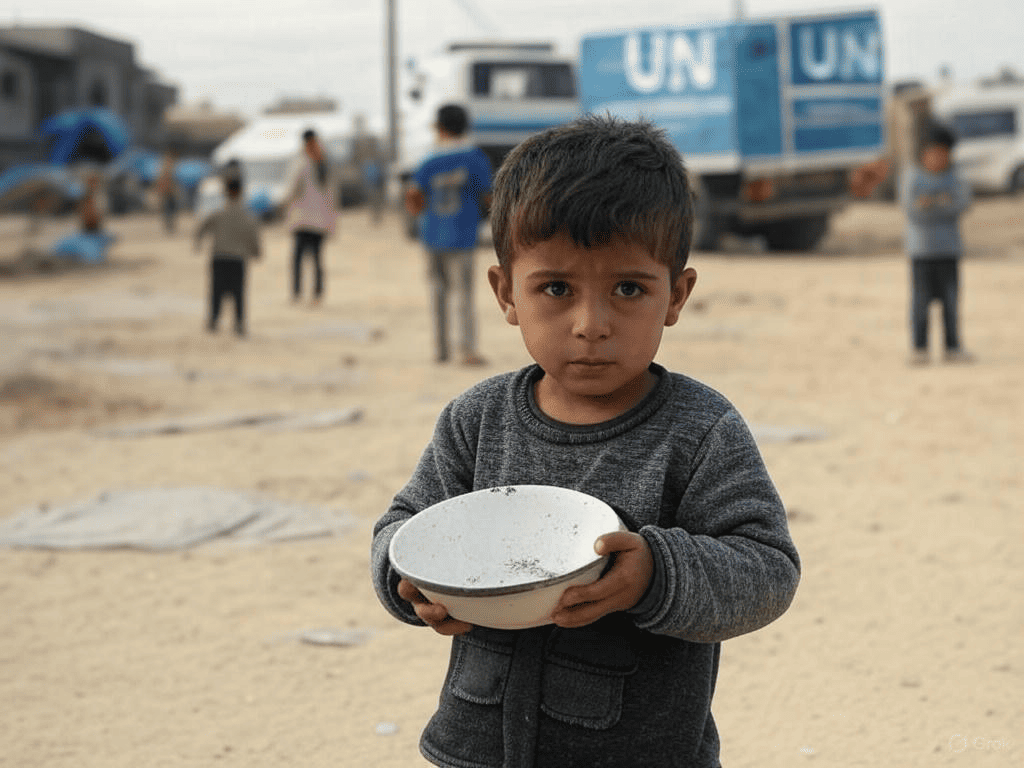
Since March 2, 2025, Gaza has been completely sealed off. No food trucks, no medicine, no fuel — nothing is getting in. Over 2.3 million people are stuck with nowhere to go and no help coming their way. And even now, weeks later, the world still hasn’t done enough.
This isn’t just another news headline. It’s a full-blown humanitarian disaster — one that’s only getting worse by the day.
What’s Happening Inside Gaza?
Gaza is facing a crisis like no other. The blockade has brought daily life to a full stop. Imagine every bakery in your city closing because there’s no flour or gas. That’s what’s happened in Gaza — all 25 bakeries that were supplying bread are now shut. There’s no fuel to power ovens and no wheat to make anything with.
More than one million people haven’t received a food parcel in weeks. That’s not just hunger — that’s starvation. According to aid groups, supplies from the World Food Programme might run out in a matter of days if the blockade continues.
Hospitals are barely functioning. They’ve got only 20% of the medical supplies they need. Clean water is almost gone — people are standing in long lines just to fill a bucket or plastic can. Some have no choice but to drink water that’s not even safe.
In Rafah, the southernmost part of Gaza, buildings are gone. Rubble everywhere. Families are living in tents and makeshift shelters. Some kids are sleeping on cardboard sheets. It’s not just a food crisis — it’s a total collapse of basic human needs.
And the violence hasn’t stopped either. Since October 2023, over 50,000 people have lost their lives. Just last week, Israeli airstrikes killed 23 more people in northern Gaza — 9 of them were children.
Why Is This Blockade Happening?
The conflict between Israel and Palestine isn’t new. But this blockade began after a ceasefire deal fell apart in early 2025. Israel claims the aid might reach Hamas, the armed group that controls Gaza. So, they’ve tightened the borders completely, saying it’s a matter of national security.
But this kind of blanket blockade? It’s hurting ordinary people the most. Children, elderly people, pregnant women — they’re the ones paying the price. Imagine shutting down all the shops, pharmacies, petrol pumps, and hospitals in a city just to stop a few bad actors. That’s what’s happening here.
The United Nations has raised alarm. Secretary-General Antonio Guterres called Gaza a “killing field.” He said people are stuck in what he called an “endless death loop.” The main route for supplies, the Rafah crossing, remains closed. And Israel still controls the other entry points.
Some countries tried sending aid through airdrops, but many of those packages ended up in the sea or in areas people couldn’t even reach. There’s no proper system in place. Aid isn’t reaching the people who need it the most.
What’s the Global Response?
The world is watching, but not enough is being done. On social media, people are sharing images of starving kids and bombed-out buildings. Hashtags like #GazaCrisis and #EndTheBlockade have gone viral.
International voices have started speaking up. France’s President Emmanuel Macron and the European Union are urging Israel to open the borders and allow aid. The UN, along with groups like UNICEF and the Red Cross, are pushing for a full ceasefire. But Israel continues to insist that Hamas is hijacking supplies — something many aid workers say doesn’t match what they’re seeing on the ground.
Meanwhile, families in Gaza are still waiting. Waiting for food, medicine and the world to take action.
Can Anything Be Done to Help?
Yes, but time is running out.
- Pressure to open the crossings: More countries need to put pressure on Israel to reopen supply routes like the Rafah crossing. Every day matters.
- Push for a long-term ceasefire: Without a ceasefire, aid can’t be delivered safely. Rebuilding can’t even begin. Peace talks need to be serious this time.
- Improve how aid is delivered: Airdrops are failing. Aid groups need better planning and support to reach people inside Gaza. Whether it’s through safer routes or better technology, solutions must be found.
- Speak up and support: Even if you’re sitting thousands of kilometres away, your voice matters. Share the truth. Support trusted NGOs. Keep the issue alive.
Final Thoughts
This isn’t just about politics. It’s about people. Ordinary families who just want to eat, drink clean water, and live without fear. When we see children going to bed hungry in 2025 — something’s deeply wrong.
In India, even in small villages, people come together when someone is suffering. That’s how we’ve always been — helping neighbours, feeding the hungry, standing up for the helpless.
What’s happening in Gaza should shake us. It should move us to care. Whether it’s through donations, raising awareness, or just refusing to look away — we can all do something.
Because when humanity fails in one place, it affects us all.

No comments yet. Be the first to comment!